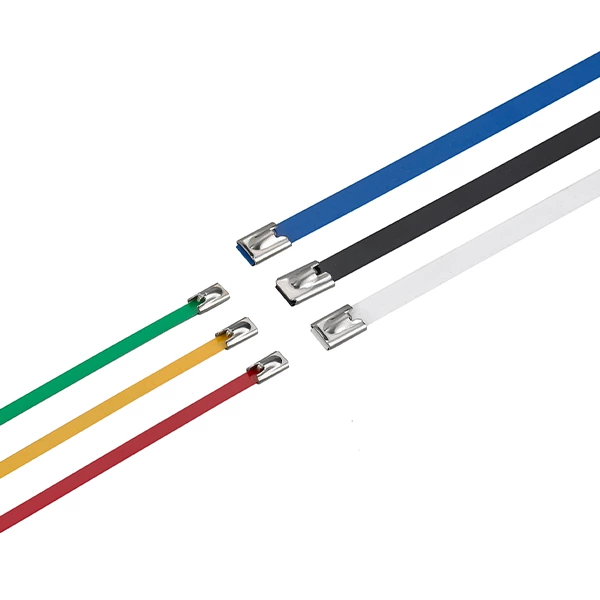Does The Surface Of Stainless Steel Cable Ties Need To Be Treated?
Many netizens asked "Does the surface of Stainless Steel Cable Tie need to be treated?" In fact, the manufacturer needs to treat its surface during the production of cable ties. According to the current processing technology, there are three ways to treat the surface of cable ties:
1. The surface is treated with natural whitening.
2. The surface is treated with mirror stone brightening.
3. The surface is treated with coloring.
1. The surface is treated with natural whitening.
During the production process of cable ties, they often need to be processed by rolling, edge binding, welding, etc., and gray-black oxide scale may be produced during the processing.
The gray-black oxide scale is generally hard, and the main components are NICR2O4 and NIF2EO4. In the early days, hydrofluoric acid and nitric acid were usually used for strong corrosion to remove this layer of gray-black oxide scale. However, this treatment method is not only costly, but also pollutes the environment and is harmful to the human body. It has basically been eliminated now.
Today, there are two main methods for treating oxide scale:
1. Use sandblasting (shot) method for treatment.
2. Use chemical method for treatment.
That is, use a non-polluting pickling passivation paste and a non-toxic additive at room temperature to soak the surface of the cable tie. So that the surface of the cable tie can be restored to its original color, so that the cable tie looks more natural. This treatment method is suitable for batch processing of cable ties, so it is promoted and used.
Second, the surface is treated with mirror stone.
According to the complexity of the cable tie and the needs of the user, it can be divided into mechanical polishing, chemical polishing and electrochemical polishing and other different treatment methods to achieve the effect of mirror stone gloss.
Mechanical polishing: This treatment method has better leveling, but it pollutes the environment more seriously, and the labor intensity is also relatively high. The difficulty of processing complex cable ties will increase, and the gloss cannot be consistent, and the gloss retention time is also relatively short.
Chemical polishing: This treatment method has low investment, can process more complex cable ties, and has high production efficiency, but the surface gloss is relatively poor, the polishing liquid needs to be humidified, and there is gas overflow. It can be used to process cable ties with low brightness and small batches of surface treatment.
Electrochemical polishing: This treatment method can achieve the effect of mirror gloss, and the gloss can be maintained for a long time. In addition, the process is stable, the operation is simple, the pollution to the environment is small, and the cost is low. Therefore, it is relatively more commonly used, but the investment is relatively large in the early days.
Three. Surface coloring treatment.
Coloring the cable tie not only gives the cable tie its own color, but also can give it various different colors, thereby increasing the variety of cable ties and improving the wear resistance of the cable tie.
The methods for coloring the cable tie surface treatment are as follows:
1. Use ion deposition oxide. Place the cable tie in a vacuum coating machine for vacuum evaporation coating. This method is more suitable for large-scale processing, but not for small-scale processing because of large investment and high cost.
2. Use high-temperature oxidation method. That is, immerse the cable tie in a certain molten salt, so that a certain thickness of oxide film is formed on the surface of the cable tie, so that many different colors can be formed.
3. Use chemical oxidation method. In a certain solution, chemical oxidation is performed to the required color, so that the same batch of cable ties can maintain the same color.
4. Use electrochemical oxidation. In a certain solution, electrochemical oxidation can be used to make the surface of the cable tie colored.
5. Use gas phase cracking. This treatment method is more complicated and is rarely used in industry.
After reading the above content, you should know that the surface of stainless steel cable ties needs to be treated, and different treatment methods have different applicable scopes.



